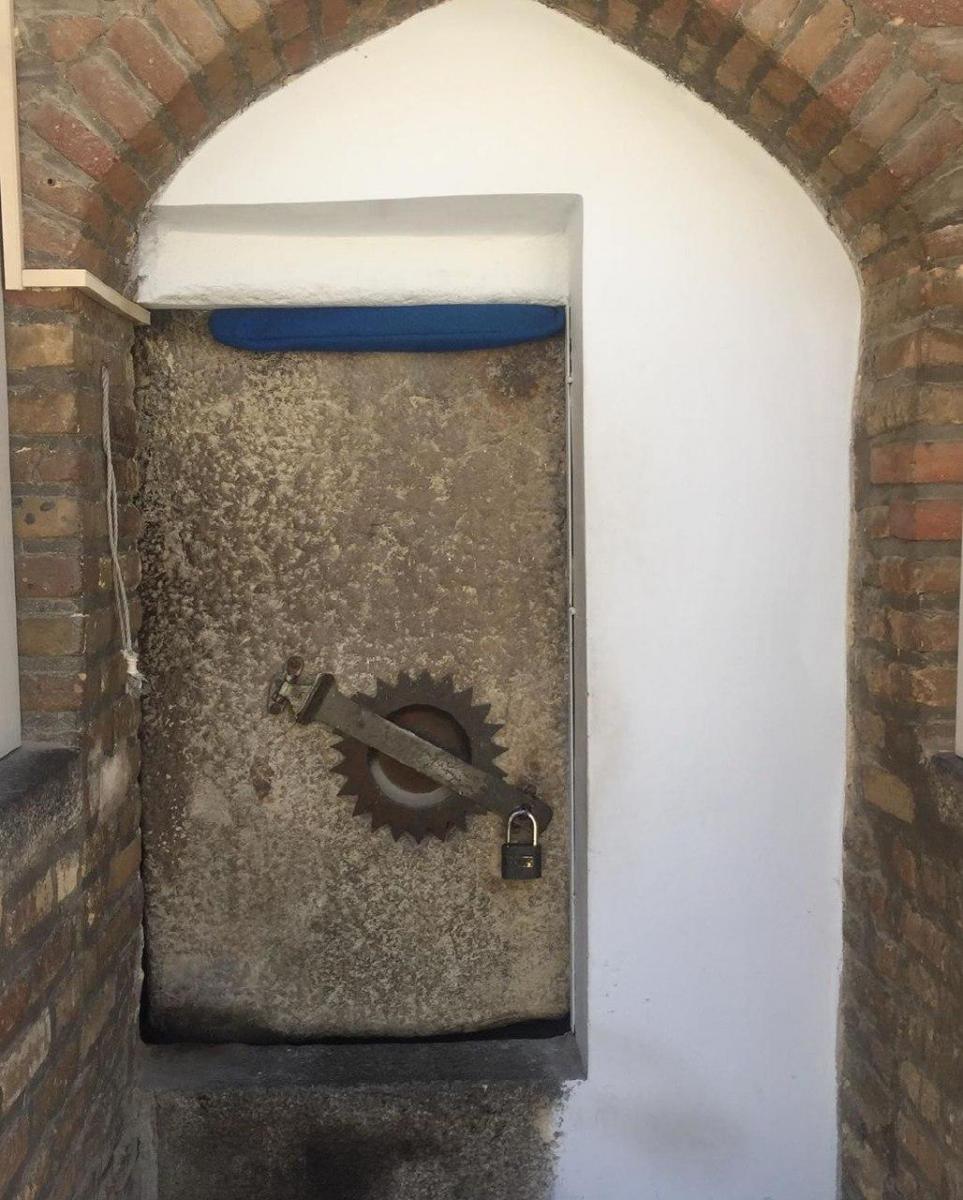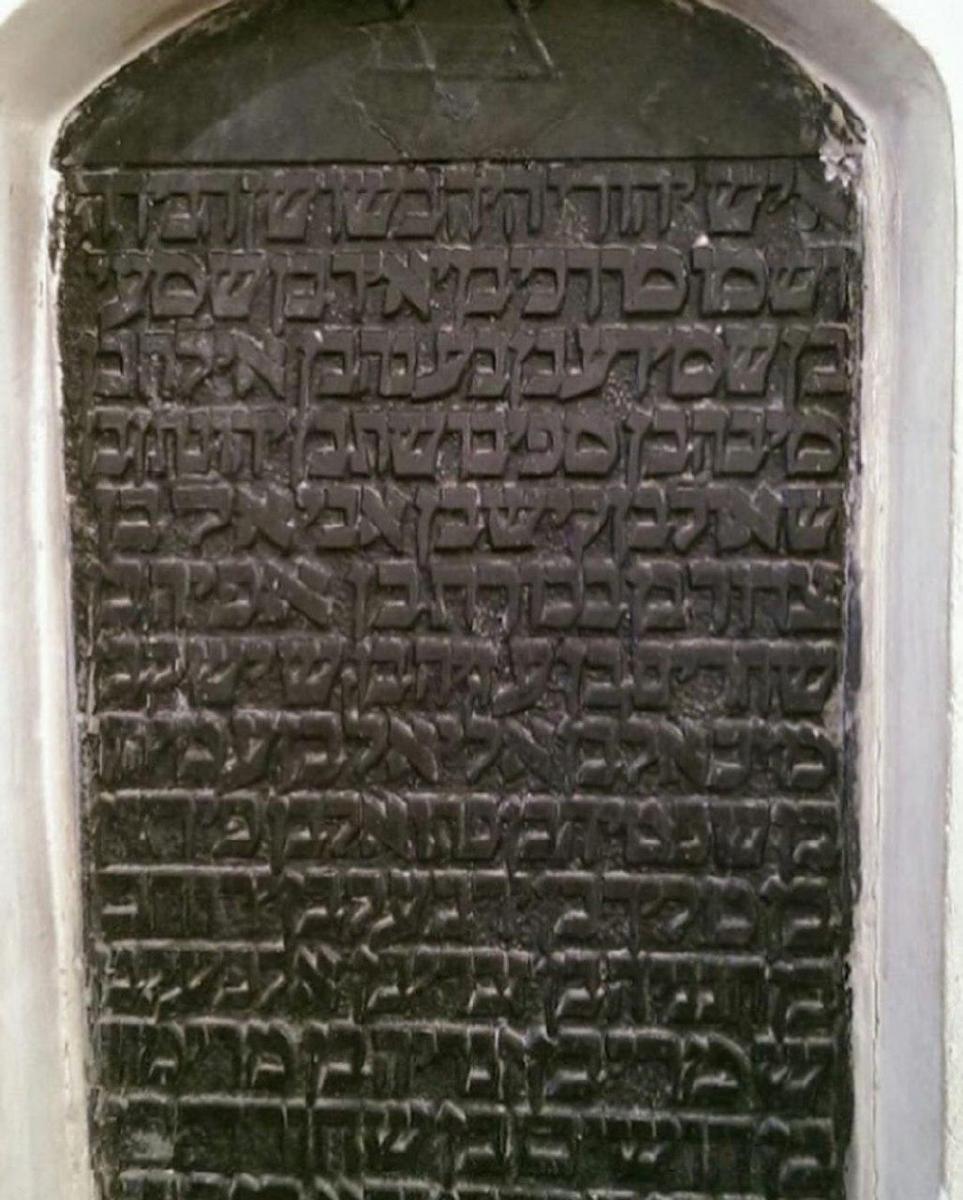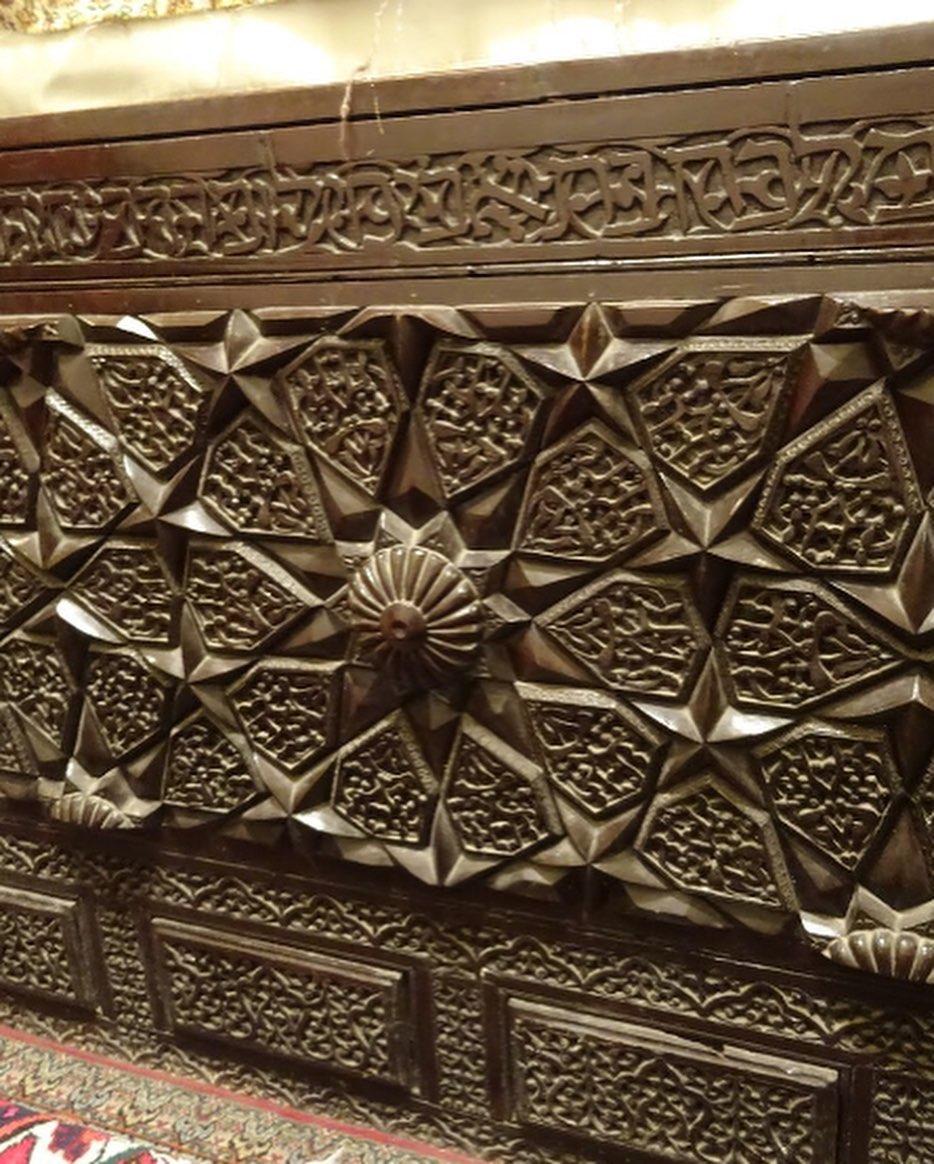Tomb of Esther and Mordechai the saviors of the Jewish community
Also known as
- Esther and Mordechai Mausoleum (also transliterated as Marduka and Mordecai)
- Ester and Mordekhay Tomb
- Esther and Mordechai Synagogue
Geographical location of Tomb of Esther and Mordechai
The tomb is located next to the Zangeneh (Zanganeh) School, at the beginning of Dr. Shariati Street, near the central square of Hamedan City, Hamedan Province, Iran. It is one of the most important shrines for the Jews in Iran. The tomb has played a vital rule in the existence and formation of the Jewish community in Hamedan.
History and culture of Tomb of Esther and Mordechai
Esther and Mordechai Synagogue dates back to the third century AH, but it was rebuilt in the seventh century AH. Jews, at least in Iran, have always worship Esther and Mordechai like prophets and believed they were the saviors of the Jewish community.
There are many different tales about Esther and Mordechai’s identity and the rule they have played in the past, but the most popular one, which is approved by the Torah is this:
Esther (meaning star) was the Jewish queen of Ahasuerus, the king of Persia, and the daughter of Mordechai’s uncle. She was very beautiful, brave, and intelligent. Therefore, when the king’s chief advisor, Haman, tried to convince the king to order the mass murder of Jews, jealous of the growing influence of Jews in the court of the king, Esther and her cousin, Mordechai, foiled the plan and gained the Jews rights to kill their enemies. According to “the book of Esther”, it’s the background story for Purim (the feast of lots). Every year, on the occasion of Purim, Jews around the world mark this miraculous salvation by reading the Book of Esther, dressing in costumes, and eating delicacies.
On the other hand, there are some disputes over the name “Ahasuerus”. Many sources refer to him as Xerxes I, Khashayar Shah the son of Darius the Great and Atossa, a daughter of Cyrus the Great, He is said to have ruled "from India even unto Ethiopia, over a hundred and twenty provinces" - that is, over the Achaemenid Empire. But other sources believe that he was Ardeshir I, Artaxerxes I, the sixth King of the Achaemenid Empire, from 465-424 BC. He was the third son of Xerxes I and ruled for forty-one years.
Architecture of Tomb of Esther and Mordechai
Stone and brick are the materials most used in the building which has a simple and humble appearance. But the Islamic architectural style will catch your eyes from first sight. So it appears that its current building was built in the seventh century AH on an older one that belonged to the third century AH.
Entering through the low opening, you will step into the first room with a low ceiling. The interior walls are inscribed in Hebrew, bearing the names of those who had visited the mausoleum. The plasterwork on top of the walls is among the striking features of the building. The inscriptions on the wall give an account of the ancestors of Esther and Mordecai. A few steps down, you will enter the oldest part of the building. This is the main hall of the mausoleum containing a 12-meter-high dome chamber which holds two coffins made of oak. The southern tomb is attributed to Esther, which is older, and the other one to Mordecai. The coffin is inscribed with passages from the Esther Book and the names of physicians who commissioned the restorations of the mausoleum. The tombs are covered with fabrics donated to the mausoleum by believers who have wished the realization of an intention through this giving away. The flanking room on the right side of the dome chamber is filled with chairs and used for praying.
Until the 1970s, the shrine was hidden away in a crowded part of Hamadan, surrounded by houses, and accessible only through a narrow dirt alley. But the site and its premises underwent a major renovation project in the early 1970s. Houses around the tomb were purchased and demolished, making the shrine accessible from the main street. The renovation, however, did not significantly alter the shrine itself, or the gravestones cluttering the plaza outside the old shrine.
Tips and ideas
The Central Square of Hamedan is located a few steps away from the tomb of Esther and Mordecai where you can walk and enjoy one of the most beautiful squares in the city, or buy something and eat before visiting the tomb. The beautiful Traditional Bazaar of Hamedan and the old Jameh Mosque of Hamedan are also located nearby. This mosque is one of the oldest and most admiring mosques in Hamedan. You can also use the map below to find all nearby monuments, restaurants, shops, and more.
IRANWATCHING would love to read your personal experiences. Please share with us in the comments below.
 2020-09-23 08:51:55+3:30
2021-11-09 09:56:42+3:30
Jews, at least in Iran, have always worship Esther and Mordechai like prophets and believed they were the saviors of the Jewish community. Esther (meaning star) was the Jewish queen of Ahasuerus, the king of Persia, and the daughter of Mordechai’s uncle. She was very beautiful, brave, and intelligent. Therefore, when the king’s chief advisor, Haman, tried to convince the king to order the mass murder of Jews, jealous of the growing influence of Jews in the court of the king, Esther and her cousin, Mordechai, foiled the plan and gained the Jews rights to kill their enemies.
2020-09-23 08:51:55+3:30
2021-11-09 09:56:42+3:30
Jews, at least in Iran, have always worship Esther and Mordechai like prophets and believed they were the saviors of the Jewish community. Esther (meaning star) was the Jewish queen of Ahasuerus, the king of Persia, and the daughter of Mordechai’s uncle. She was very beautiful, brave, and intelligent. Therefore, when the king’s chief advisor, Haman, tried to convince the king to order the mass murder of Jews, jealous of the growing influence of Jews in the court of the king, Esther and her cousin, Mordechai, foiled the plan and gained the Jews rights to kill their enemies.



 eyJpdiI6IkNZOXdKSy9USm5QL3JRYXBVWGVXSFE9PSIsInZhbHVlIjoiNnNHNElyT0czZEFuMGJLSUNlSHZ5QT09IiwibWFjIjoiMWYzY2Q4ZjM1ODYyNWM3YWNmMTIyMzE4YTNhNGY3NGYwZjU2MGUzYTQxYzVmY2ExNjVjMmE1ZDYzODZkZGY4MiIsInRhZyI6IiJ9 eyJpdiI6ImNSSW5pZ0I5VHlJc3A3U09VWFRZTWc9PSIsInZhbHVlIjoiM05NMUZtV0NQenFsOHFNWFRKUTJ0QT09IiwibWFjIjoiZTllZGE4NjhiY2YzNjEzYTI1MmIyY2RkZjEyNzI5NjdiZGQ3YzEzOTY5ZDk2NDZkZWZjNzk4YzI2N2M0MzdkNyIsInRhZyI6IiJ9
Author
info@yaldamedtour.com
/en/user-profile/10233
YaldaMedTour
Barajin Salamat Road
+98
Qazvin
Qazvin, Qazvin Province, Iran.
,
info@yaldamedtour.com
Tomb of Esther and Mordechai - the saviors of the Jewish community
Tomb of Esther and Mordechai - the saviors of the Jewish community
eyJpdiI6IkNZOXdKSy9USm5QL3JRYXBVWGVXSFE9PSIsInZhbHVlIjoiNnNHNElyT0czZEFuMGJLSUNlSHZ5QT09IiwibWFjIjoiMWYzY2Q4ZjM1ODYyNWM3YWNmMTIyMzE4YTNhNGY3NGYwZjU2MGUzYTQxYzVmY2ExNjVjMmE1ZDYzODZkZGY4MiIsInRhZyI6IiJ9 eyJpdiI6ImNSSW5pZ0I5VHlJc3A3U09VWFRZTWc9PSIsInZhbHVlIjoiM05NMUZtV0NQenFsOHFNWFRKUTJ0QT09IiwibWFjIjoiZTllZGE4NjhiY2YzNjEzYTI1MmIyY2RkZjEyNzI5NjdiZGQ3YzEzOTY5ZDk2NDZkZWZjNzk4YzI2N2M0MzdkNyIsInRhZyI6IiJ9
Author
info@yaldamedtour.com
/en/user-profile/10233
YaldaMedTour
Barajin Salamat Road
+98
Qazvin
Qazvin, Qazvin Province, Iran.
,
info@yaldamedtour.com
Tomb of Esther and Mordechai - the saviors of the Jewish community
Tomb of Esther and Mordechai - the saviors of the Jewish community
 Jews, at least in Iran, have always worship Esther and Mordechai like prophets and believed they were the saviors of the Jewish community. Esther (meaning star) was the Jewish queen of Ahasuerus, the king of Persia, and the daughter of Mordechai’s uncle. She was very beautiful, brave, and intelligent. Therefore, when the king’s chief advisor, Haman, tried to convince the king to order the mass murder of Jews, jealous of the growing influence of Jews in the court of the king, Esther and her cousin, Mordechai, foiled the plan and gained the Jews rights to kill their enemies.
Jews, at least in Iran, have always worship Esther and Mordechai like prophets and believed they were the saviors of the Jewish community. Esther (meaning star) was the Jewish queen of Ahasuerus, the king of Persia, and the daughter of Mordechai’s uncle. She was very beautiful, brave, and intelligent. Therefore, when the king’s chief advisor, Haman, tried to convince the king to order the mass murder of Jews, jealous of the growing influence of Jews in the court of the king, Esther and her cousin, Mordechai, foiled the plan and gained the Jews rights to kill their enemies.



 Dr. Shariati Street, Central Square, Hamedan, Hamedan Province, Iran.
+98
Dr. Shariati Street, Central Square, Hamedan, Hamedan Province, Iran.
Dr. Shariati Street, Central Square, Hamedan, Hamedan Province, Iran.
IR
Show On Google Maps
Tomb of Esther and Mordechai - the saviors of the Jewish community
Tomb of Esther and Mordechai - the saviors of the Jewish community
Dr. Shariati Street, Central Square, Hamedan, Hamedan Province, Iran.
+98
Dr. Shariati Street, Central Square, Hamedan, Hamedan Province, Iran.
Dr. Shariati Street, Central Square, Hamedan, Hamedan Province, Iran.
IR
Show On Google Maps
Tomb of Esther and Mordechai - the saviors of the Jewish community
Tomb of Esther and Mordechai - the saviors of the Jewish community
 Jews, at least in Iran, have always worship Esther and Mordechai like prophets and believed they were the saviors of the Jewish community. Esther (meaning star) was the Jewish queen of Ahasuerus, the king of Persia, and the daughter of Mordechai’s uncle. She was very beautiful, brave, and intelligent. Therefore, when the king’s chief advisor, Haman, tried to convince the king to order the mass murder of Jews, jealous of the growing influence of Jews in the court of the king, Esther and her cousin, Mordechai, foiled the plan and gained the Jews rights to kill their enemies.
Dr. Shariati Street, Central Square, Hamedan, Hamedan Province, Iran.
+98
Dr. Shariati Street, Central Square, Hamedan, Hamedan Province, Iran.
Dr. Shariati Street, Central Square, Hamedan, Hamedan Province, Iran.
IR
Show On Google Maps
Adults
Persian
English.
Jews, at least in Iran, have always worship Esther and Mordechai like prophets and believed they were the saviors of the Jewish community. Esther (meaning star) was the Jewish queen of Ahasuerus, the king of Persia, and the daughter of Mordechai’s uncle. She was very beautiful, brave, and intelligent. Therefore, when the king’s chief advisor, Haman, tried to convince the king to order the mass murder of Jews, jealous of the growing influence of Jews in the court of the king, Esther and her cousin, Mordechai, foiled the plan and gained the Jews rights to kill their enemies.
Dr. Shariati Street, Central Square, Hamedan, Hamedan Province, Iran.
+98
Dr. Shariati Street, Central Square, Hamedan, Hamedan Province, Iran.
Dr. Shariati Street, Central Square, Hamedan, Hamedan Province, Iran.
IR
Show On Google Maps
Adults
Persian
English.
Tomb of Esther and Mordechai - the saviors of the Jewish community
 Jews, at least in Iran, have always worship Esther and Mordechai like prophets and believed they were the saviors of the Jewish community. Esther (meaning star) was the Jewish queen of Ahasuerus, the king of Persia, and the daughter of Mordechai’s uncle. She was very beautiful, brave, and intelligent. Therefore, when the king’s chief advisor, Haman, tried to convince the king to order the mass murder of Jews, jealous of the growing influence of Jews in the court of the king, Esther and her cousin, Mordechai, foiled the plan and gained the Jews rights to kill their enemies.
Dr. Shariati Street, Central Square, Hamedan, Hamedan Province, Iran.
+98
Dr. Shariati Street, Central Square, Hamedan, Hamedan Province, Iran.
Dr. Shariati Street, Central Square, Hamedan, Hamedan Province, Iran.
IR
unknown
Jews, at least in Iran, have always worship Esther and Mordechai like prophets and believed they were the saviors of the Jewish community. Esther (meaning star) was the Jewish queen of Ahasuerus, the king of Persia, and the daughter of Mordechai’s uncle. She was very beautiful, brave, and intelligent. Therefore, when the king’s chief advisor, Haman, tried to convince the king to order the mass murder of Jews, jealous of the growing influence of Jews in the court of the king, Esther and her cousin, Mordechai, foiled the plan and gained the Jews rights to kill their enemies.
Dr. Shariati Street, Central Square, Hamedan, Hamedan Province, Iran.
+98
Dr. Shariati Street, Central Square, Hamedan, Hamedan Province, Iran.
Dr. Shariati Street, Central Square, Hamedan, Hamedan Province, Iran.
IR
unknown
Keywords: Tomb of Esther and Mordechai, Esther and Mordechai Mausoleum, Ester and Mordekhay Tomb, Esther and Mordechai Synagogue,
Nearby Places
Copyright © 2026 To YaldaMedTour. All Rights Reserved.
![]()



